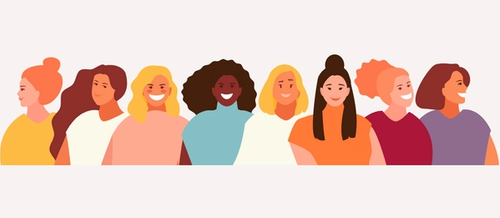When I first heard the term ‘collective care’ it made so much sense. More and more I have felt that ‘self care’ is a term that has a whiff of blame, an inference that it is our fault if we are struggling.
Of course we need to look after ourselves. But perhaps more importantly, we need to look after each other.
The need for connection and community
COVID-19 has highlighted the need for connection for our individual and collective wellbeing. We are, after all, wired for connection and community. As American psychologist Louis Cozolino puts it:
"We are not the survival of the fittest, we are the survival of the nurtured."
The word ‘nurture’ originates from ‘nourishment’, and according to the Oxford dictionary, is defined as “to care for and protect someone; to help and encourage the development of someone”.
So, what is Cozolino saying?
- We survive when we are cared for and protected.
- We survive when we are helped and encouraged to develop.
- We are not meant to care for ourselves alone.
There is a reason that we have evolved to exist together: we flourish with the support of our people.
Collective care in the workplace
Positive workplaces understand the importance of:
- cultivating supportive communities
- implementing preventative measures and protocols at an organisational level
- formal and informal supports such as good management and leadership, regular supervision and peer support
- encouraging employees to have fun and learn together to create cohesive teams with good morale
We all have positive and negative work experiences. When I think back to difficult situations that I have confronted at work, I know it is the support and care of my team, friends and family that helped me through. I also know that in the times that I haven’t had adequate support, the isolation and burden was hard to bear.
Social buffering
Social buffering is an area of science made famous by Jim Coan and associates with their 2006 study demonstrating that adults undergoing a painful experience found the procedure to be more bearable when they had a trusted, caring partner holding their hand. What is perhaps both surprising and sobering, is the finding that in the absence of a trusted partner, pain was more tolerable when holding hands with a stranger, or being alone, than it was when holding hands with a partner where the relationship was difficult.
A team of neuroscientists led by Nim Tottenham found that this same buffering effect with parents who are responsive and present to their child’s needs. Children who have attentive and attuned parents have greater capacity to respond to situations with flexibility, and are able to concentrate for longer periods of time than their peers with disengaged parents.
What does this mean for collective care?
- Supportive and caring connections with others help us manage stress and improve our ability to respond with flexibility to challenging situations.
- Conversely, we are better off alone or being supported by strangers, than being surrounded by people that we know who are disconnected from our needs.
Ultimately it is the quality of the relationship that matters.
How do we create quality connections that build support and care?
True connection, according to researcher and author Brené Brown, requires us to be able to
- sit with our own discomfort
- be vulnerable with someone who is safe, supportive and empathic
- have real, robust and brave conversations
So that we can be seen.
Empathy is the key.
Empathy is the link that helps us to move from feeling disconnected to connected. Empathy enables us to identify with the feelings and perspectives of another and stay with those feelings. This means being able to sit in joy AND discomfort.
In this clip Brown cites Theresa Wiseman’s four qualities of empathy as:
- Being able to see the world through another’s eyes
- Having an attitude of non-judgement
- Recognising emotions in others and
- Communicating understanding of these emotions
In order to be present and sit in our own discomfort, we need to feel safe.
Building authentic connections in relation to our work
For a myriad of reasons, it is not always possible for us to feel safe at work. And feeling unsafe for prolonged periods can lead to poor mental health. However, as we have discussed, turning to others to shift from stress to safety can be of enormous benefit.
For when your workplace or colleagues might be a part of the problem, or are too stressed to be of support, creating networks outside of your organisation are important. Some ways to do this are through:
Colleagues who are friends outside of work
Your professional association
Accessing external supervision
Engaging with external counselling
Connecting to a support group
Talking to family and friends





